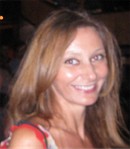

Plenary Lecture
Semi-Active Control Devices for Civil Structures based on Pseudo-Elastic Components: Dissipative Skill, Re-Centring Effect, Robustness and Containment of Energy Demand

Professor Ottavia Corbi
Department of Structural Engineering
University of Naples Federico II
Italy
E-mail: ottavia.corbi@unina.it
Abstract: Structural control devices for mitigation of dynamic response effects are often characterized by high energy demand and affected by noises and errors that may result in compromising their robustness and effectiveness. Semi-active devices based on the adoption of components using special materials exhibiting, when properly designed, special pseudo-elastic properties, are able to account for all of these problems, ensuring robustness, low operational costs, and full reliability with respect to the specific tasks of exerting a dissipative action with respect to the structural response to dynamic events, moreover minimizing the residual deformations of the structure with high re-centering capability.
Brief Biography of the Speaker: Ottavia Corbi graduated at the University of Naples Federico II in 1996, and, then, in 2000 with a Ph.D. degree in Structural Engineering. From 2000 she has been teaching courses on main topics of Structural Mechanics in the Department of Science of Costructions at the University of Naples. Since 2002 then she has been a faculty member of the Department of Science of Constructions and, thereafter, of the Department of Structural Engineering of the University of Naples, serving as an assistant professor from 2002 to 2004, and as an associate professor from 2004 to 2012. Her research interests include structural dynamics and control of vibrations, optimization methods, materials’ modeling, static and dynamic analysis of masonry constructions, composite materials, stochastic mechanics. She is author of four books and more than 120 papers published in international journals and conference proceedings. She has also delivered many speeches at various international conferences.